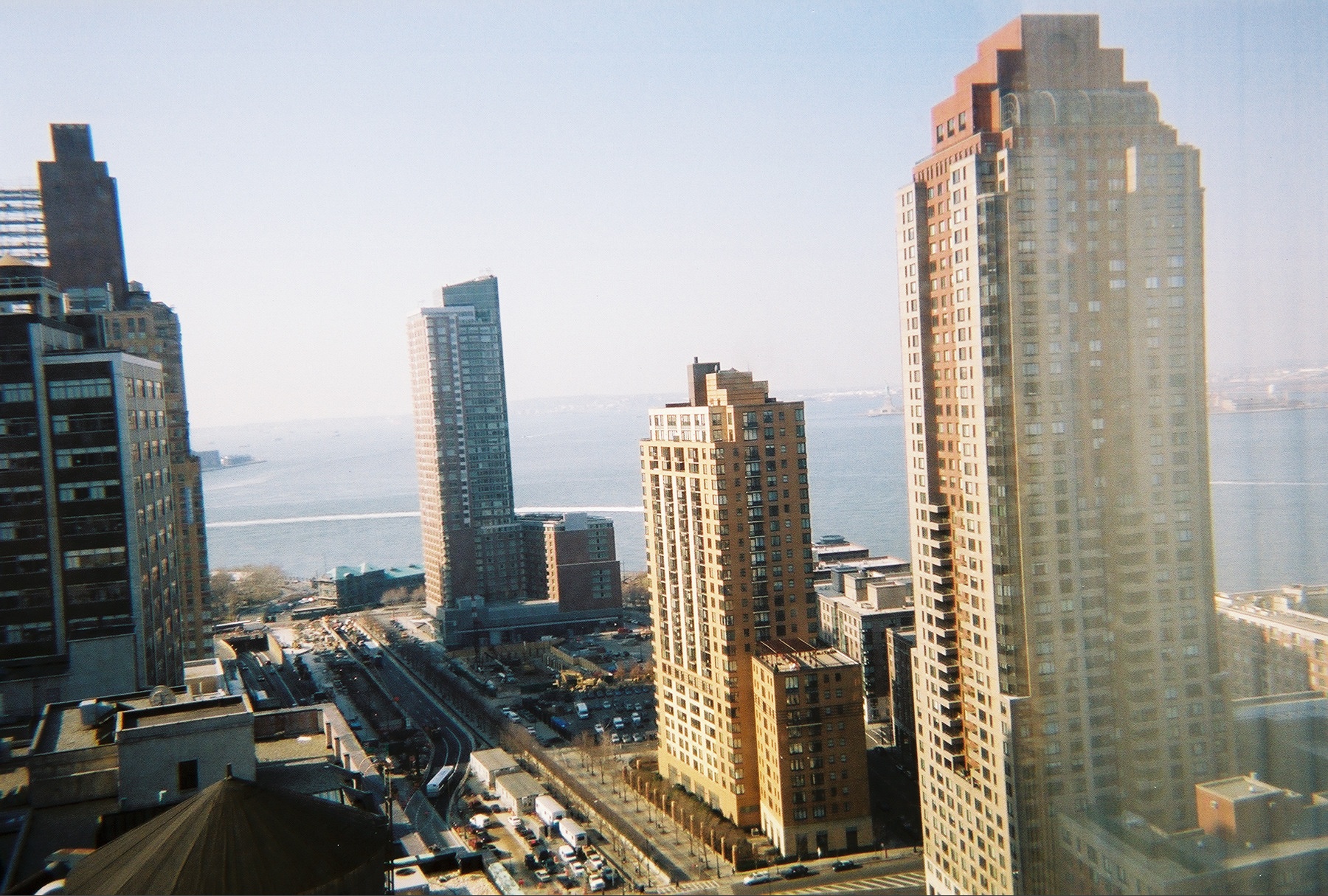
Main Page > 2005 Irish I was in New York !!
"Oh Saints Preserve Me !!" belched and bruised and battered Bone the next morning, Mike on the other hand was in good shape by wisely quitting earlier in the night. The Boys formulated a plan for the day, They had a good working knowledge of Manhattan, and wanted to expand their New York knowledge, the Boys decided to check out more of Brooklyn, the Williamsburg Neighborhood in particular along with some of New York's famous institutions.
A Beautiful Down Town Morning !!!

The Sad, Sad, Site of Ground Zero
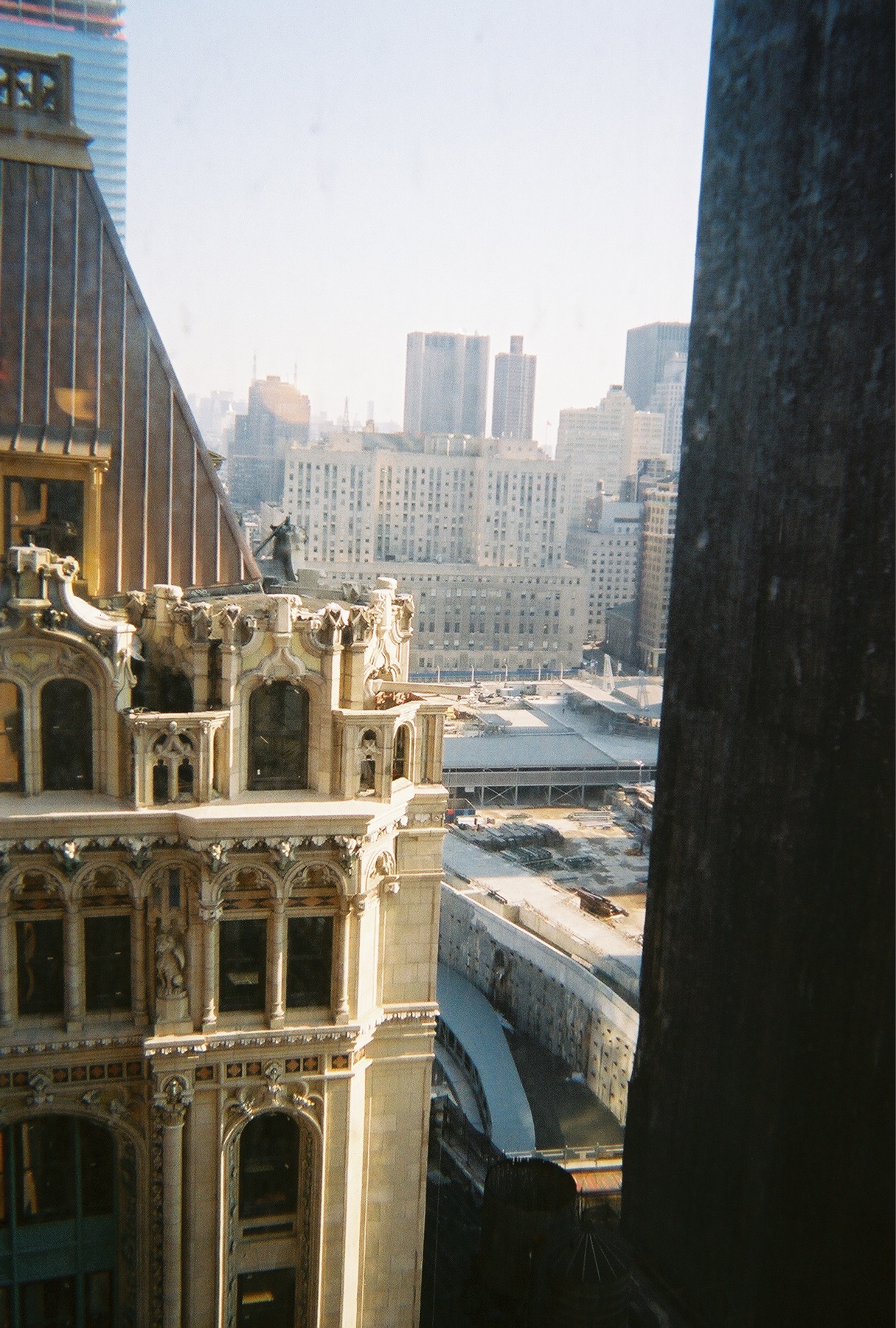
On their way out of their Hotel Room, they noticed that they could see the Statue of Liberty from their hotel room and sadly, the site of the former World Trade Center at Ground Zero. Grabbing a couple of cups of coffee they decided there was no better way to get to Brooklyn than walk over the Brooklyn Bridge !!!! On their way the fog of the evenings excesses were quickly washed away with the beautiful clear morning sky and Bone sharp verbal insults hurled at a group of Lyndon LaRouche supporters advocating the impeachment of President Bush. With shouts of "Karl was the least funny of the Marx Brothers !!!" and " Live in the now, communism didn't work !!", the Boys started up the Brooklyn Bridge.
"Look at the Bridge we just bought !!"
Mike and Bone walking Brooklyn Bridge

History of the Brooklyn Bridge In 1855, John Roebling, the owner of a wire-rope company and a famous bridge designer, proposed a suspension bridge over the East River after becoming impatient with the Atlantic Avenue-Fulton Street Ferry. Roebling worked out every detail of the bridge, from its massive granite towers to its four steel cables. He thought his design entitled the bridge "to be ranked as a national monument… a great work of art."
The elder Roebling had experience with suspension spans, with bridges along the Delaware, Niagara and Ohio Rivers.
In 1867, a group of prominent leaders formed the New York Bridge Company "for the purpose of constructing and maintaining a bridge across the East River." Under the enabling act, the city of Brooklyn (which stood to benefit the most from the bridge) subscribed for $3 million of the capital stock, while the city of New York only subscribed for $1.5 million.
Two years later, in June 1869, the New York City Council and the Army Corps of Engineers approved Roebling's design. Later that month, while examining locations for a Brooklyn tower site, Roebling's foot was crushed on a pier by an incoming ferry. Roebling later died of tetanus as a result of the injuries. Immediately following Roebling's death, his son, Washington, took over as chief engineer of the Brooklyn Bridge.
Soon after ground was broken on January 3, 1870, work on the Manhattan and Brooklyn foundations. The 3,000-ton pneumatic caissons - large, airtight cylinders in which workers cleared away layers of silt in an atmosphere of compressed air underneath the riverbed - were dug 78˝ feet below the river on the Manhattan side, and 44˝ feet below the river on the Brooklyn side. To expedite the descent of the caissons, dynamite was used for the first time in bridge construction. The foundations took three years to construct.
Life in the caissons was miserable. Immigrant laborers worked in the subterranean foundations, paid $2.25 per day to work in hazardous conditions without electricity, telephones or other conveniences. E.F. Farrington, the master mechanic working under Washington Roebling, described the inner workings of the caissons as follows:
Fires, explosions and caisson disease (caused by changes in air pressure that affect nitrogen levels in the bloodstream) took the lives of 20 men, and left Washington Roebling himself paralyzed. Thereafter, the younger Roebling, with the extraordinary assistance of his wife Emily, directed the construction of the bridge from his Brooklyn residence. With her husband's assistance, Emily Roebling studied higher mathematics and bridge engineering, and soon made daily visits to the bridge to oversee her husband's staff of engineers and builders.
Between 1873 and 1877, work continued on the anchorages, towers and cables under the direction of Washington Roebling. The 276-foot neo-Gothic granite towers, which feature two arched portals, were built to withstand strong winds and provide support for rail lines.
The towers were to serve two very fundamental purposes. They would bear the weight of four enormous cables, and they would hold both the cables and the roadway of the bridge high enough so they would not interfere with traffic on the river. Were the two cities at higher elevations, were they set on cliffs, or palisades such as those along the New Jersey side of the Hudson, for example, such lofty steelwork would not be necessary. As it was, however, only very tall towers could make up for what nature had failed to provide, if there was to be the desired clearance for sailing ships. And as the mass of the anchorages had to be sufficient to offset the pull of the cables, where they were secured on land, so the mass of the towers, whatever their height, had to be sufficient to withstand the colossal downward pressure of the cables as they passed over the tops of the towers.
From one end to the other, the Brooklyn Bridge measures 6,016 feet, including approaches. The long river span passes the tower arches at an elevation of 119 feet, gradually rising to 135 feet above the East River at mid-span to accommodate passage of even the tallest ships. (The 135-foot clearance soon became the standard for bridge construction.) Because of the elevation of the span above the East River and the relatively low-lying shores, the rest of the bridge, sloping down to ground level, had to extend quite far inland on both sides of the river to provide an easy three and one-quarter percent grade.
The Brooklyn Bridge cost $15.1 million to build, $3.8 million of which was to purchase land for approaches and the remainder going toward construction. This was more than twice the original cost estimate of $7 million.
On May 23, 1883, President Chester Arthur and Governor Grover Cleveland officially dedicated the Brooklyn Bridge before more than 14,000 invitees. Emily Roebling was given the first ride over the completed bridge with a rooster, a symbol of victory, in her lap. After the opening ceremony, anyone with a penny for the toll could cross the Brooklyn Bridge. On the first day, the bridge carried trolley lines, horse-drawn vehicles, and even livestock.
Absolutely Strange Facts about the Brooklyn Bridge
1884: P.T. Barnum demonstrated the safety of the bridge by parading across it with a herd of 21 elephants.
1885: Robert E. Odlum was the first man to jump off the bridge, but did not survive the fall. (Contrary to popular belief, Steve Brodie did not jump off the bridge. He merely pulled off a publicity stunt in order to attain fame.)
1895: Clara McArthur was the first woman to jump off the bridge, weighting her stockings with 20 pounds of sand so that she would fall feet first. She survived the fall.
1933: According to a letter published in the Brooklyn Eagle, a woman claimed that she climbed up the walkway to the Brooklyn tower, and jumped rope on top of the tower.
1960: Ed Quigley wagered $100 with his drinking buddies that he would survive a jump off the Brooklyn Bridge. He won the bet
1974: Mario Manzini, dressed like Elvis Presley, tried to jump off the bridge in handcuffs to prove that he was the best escape artist since Houdini. Police thwarted this escape attempt.
2001: On undoubtedly the saddest day in the history of the bridge (and of New York City), thousands of people fled by foot across the bridge to escape the destruction at the World Trade Center.
2006: City workers conducting a regular bridge inspection found a cold-war era supply chamber inside the foundation near the Manhattan shoreline. More than 350,000 items, including half-century-old water drums, food canisters, and medical supplies were found inside the chamber. The supplies were to have been used in the event of a nuclear attack on New York City.
Walking across the famous span that cool, crisp March morning provided Mike and Bone a wonderful view of the Manhattan Skyline, the East River, all the way out to the Atlantic Ocean and Lady Liberty. Where the weather was simply delightful on shore, as the Boys continued a across the stiff Ocean breeze on the River, made the journey downright nipplely !!!.
"Are we there yet!!!"
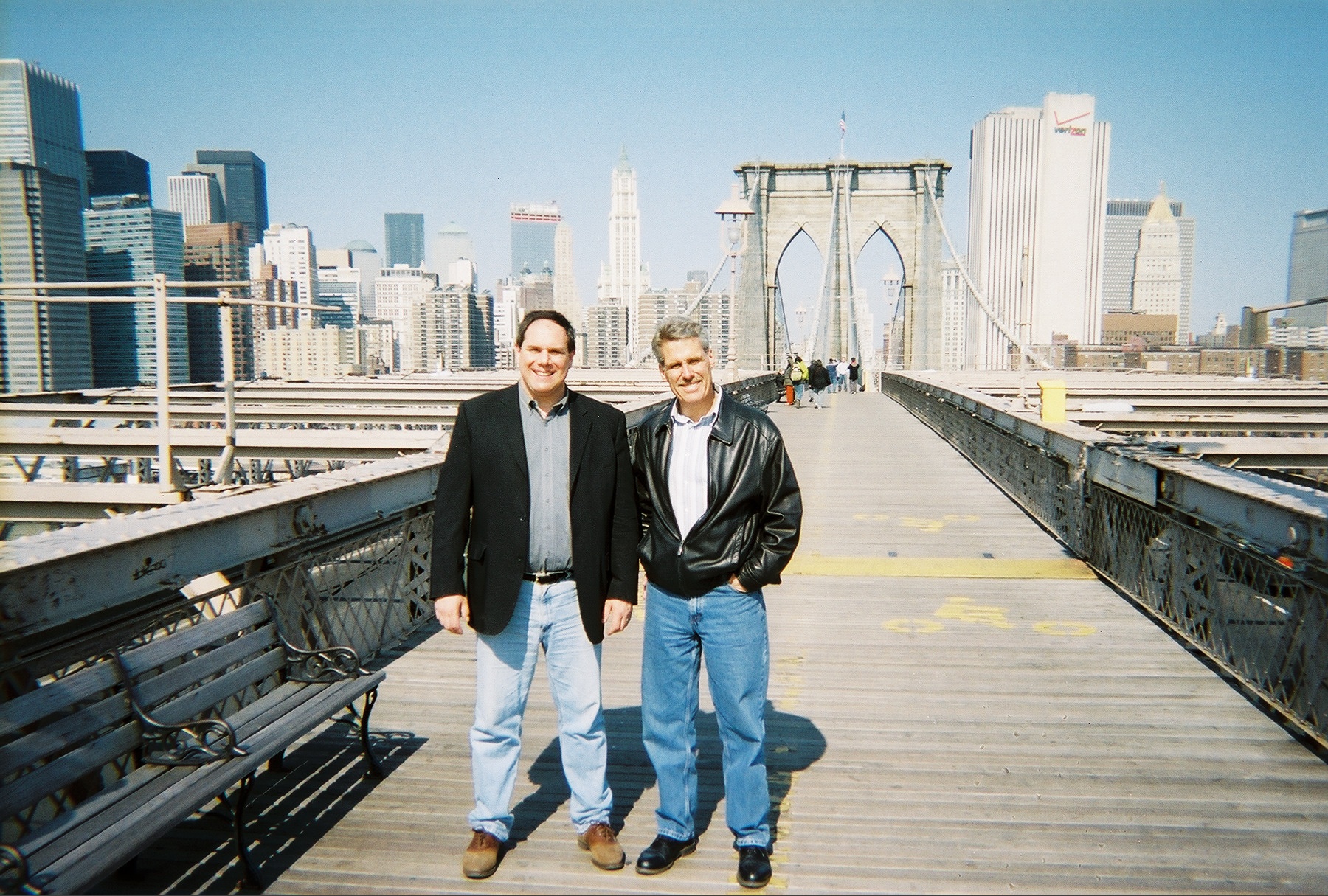
Brooklyn is not Manhattan:The plan was to cross the Bridge, and grab a cab up the 30 blocks to Williamsburg. Now in Manhattan, you can cross the street without tripping on a cab, however in Brooklyn the Boys waited 20 minutes to catch a Cab that was actually on its way back to Manhattan, in order to get up to Williamsburg, a phenomenon they dealt with the entire day they spent in Brooklyn.
Walking Williamsburg, Brooklyn
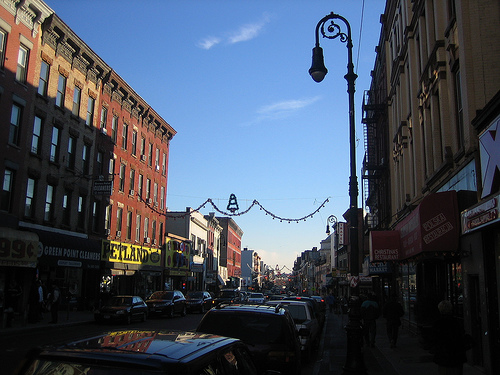
What's up with Williamsburg? Brooklyn has long played second fiddle to Manhattan, but recently many of the bohemian artists, actors, and eclectic types had been moving from the Village due to the every increasing cost of living on the Island, and moving to Williamsburg, which is located directly underneath the Manhattan Bridge. Williamsburg has long been a diverse community with a large Hasidic Jewish Community, Jamaican Community and other immigrants. Walking around, it was apparent to the Boys that it was an nice community with a lot of gentrified boutiques, and not-so-good Thai restaurants, but nothing to compare with Greenwich Village.
Brooklyn Brewing Company
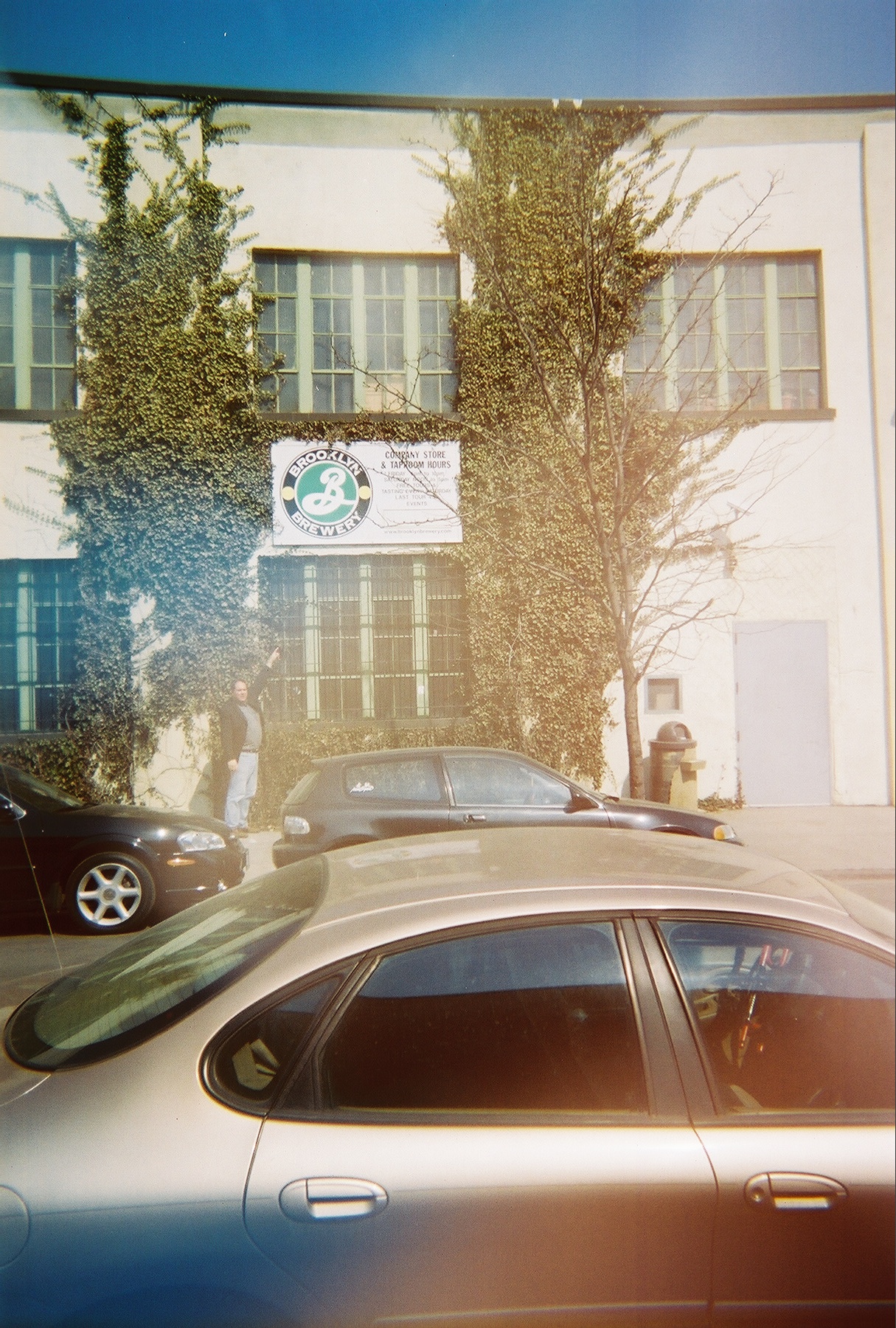
After stopping at a really bad Thai Place for Breakfast, the Boys continued to wander the area finding the home of the renown Brooklyn Brewing Company along the East River but really not much else other than warehouses and empty buildings. By 2:00 PM, with the Boys not all that impressed with Williamsburg, they decided to head back to the Island via the Manhattan Bridge, hoping against hope to catch a Cab on the way over.
Bookin back from Brooklyn on the Manhattan Bridge
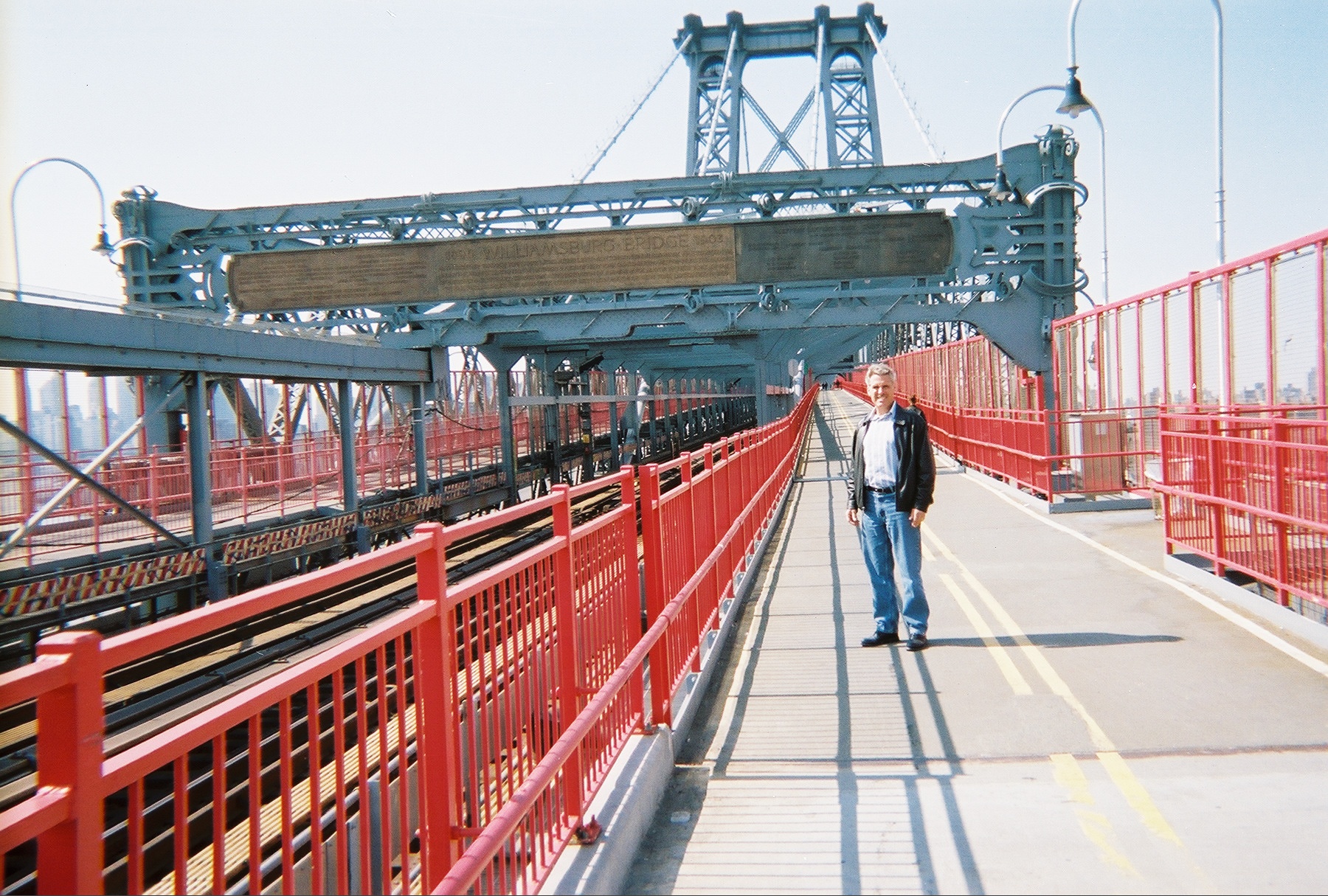
As stated earlier, catching a cab in Brooklyn isn't difficult, it is impossible ! The Boys walked up and over the Manhattan Bridge (which was half as cool and pedestrian-friendly as the Brooklyn Bridge) onto Delancey Street in the Heart of the Lower East Side with every seeing a cab. Once in Manhattan, the cabbies showed up again like flies on poop !!
Deciding to wander around the Lower Eastside, Mike and Bone walked by street after street on old Tenement buildings, that despite being old, appear to be clean and well maintained to this day. With all the fresh air, walking, and bad Thai, the Boys had worked up an appetite, being in the Lower Eastside means great deli's, and there ain't no better deli's than New York's oldest deli Katz's !!!
'Noshing at Katz's Deli, 205 East Houston Street, Lower East side
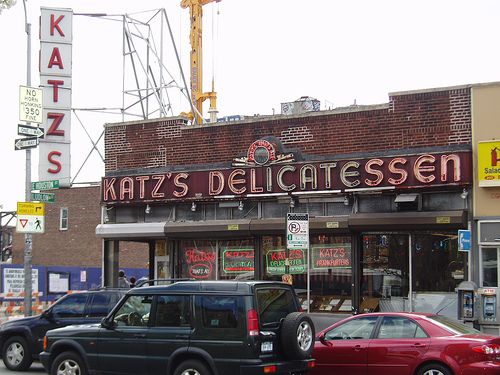
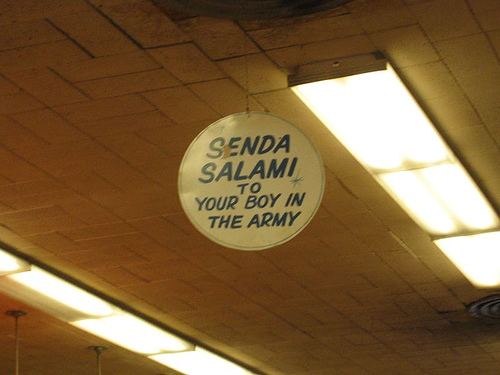
Opened by Russian immigrants in 1888 Katz's Deli on 205 Houston Street, is a New York Tradition, with the best hot pastrami sandwich in the world. Katz has gained our National attention twice in past its history. During World War II, Katz gain national attention for their "Senda Salami to Your Boy in the Army !" campaign, with GI's to this day sending pictures to Katz's of them holding salami's in Iraq and Afghanistan.
The second time Katz's caught our attention is in the Movie, "When Harry Met Sally", Katz's served as the back drop for the famous scene where Sally faked a very loud and public orgasm, and Rob Reiner's (the Director) Mother asked the waiter "I'll have what she's having!"
Looking for Sally at Katz's Deli
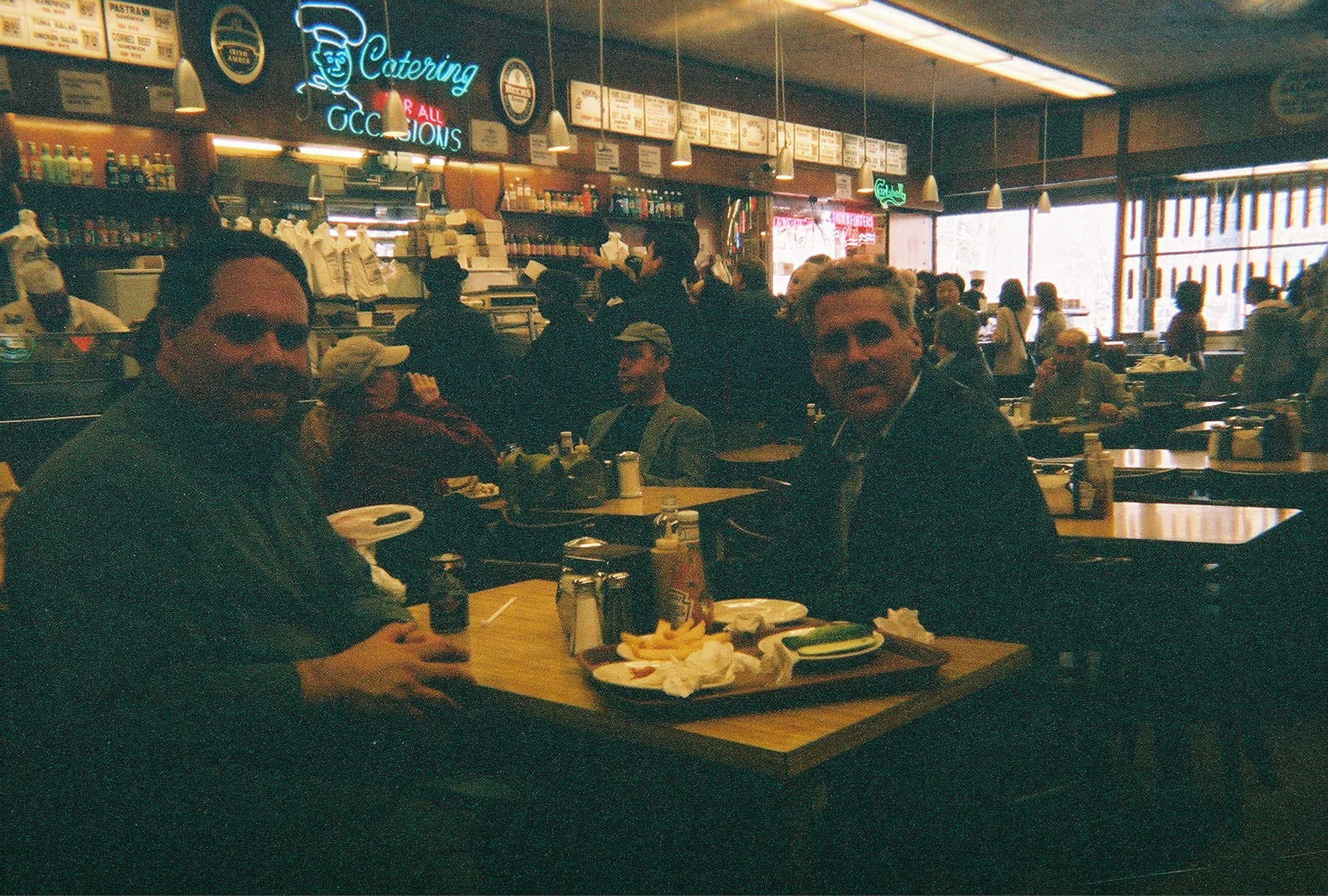
A darn fine Pastrami on Rye
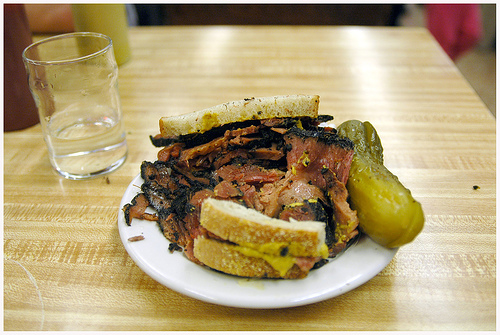
The Boys loaded up on Pastrami and Corned Beef at Katz, and truly enjoyed the best deli they have ever had. As the day began to wane, they decided around 5:00 PM to check out the world famous Oak Room in the Plaza Hotel, off of Central Park.
Goin' upscale in the Oak Room in the Plaza
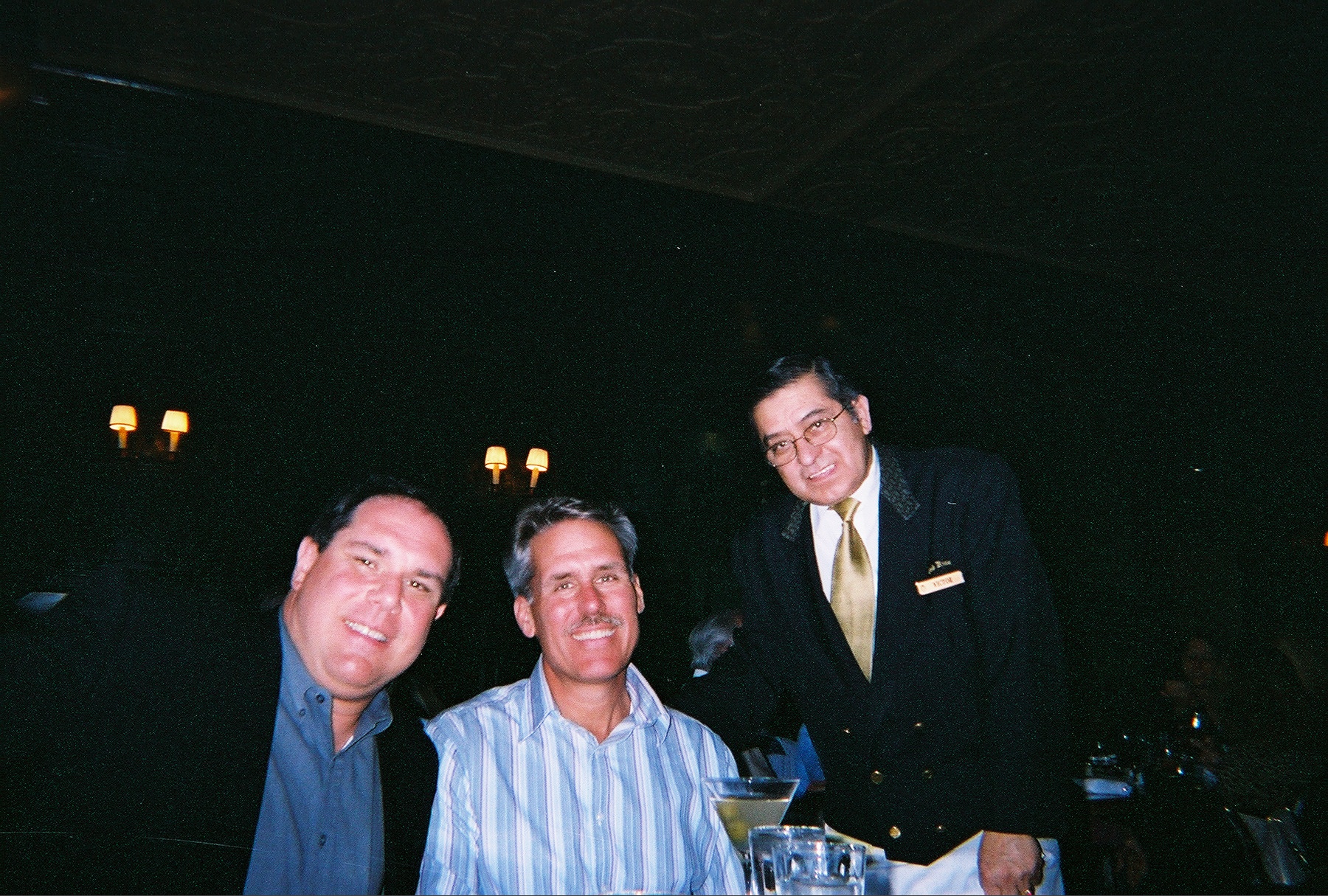
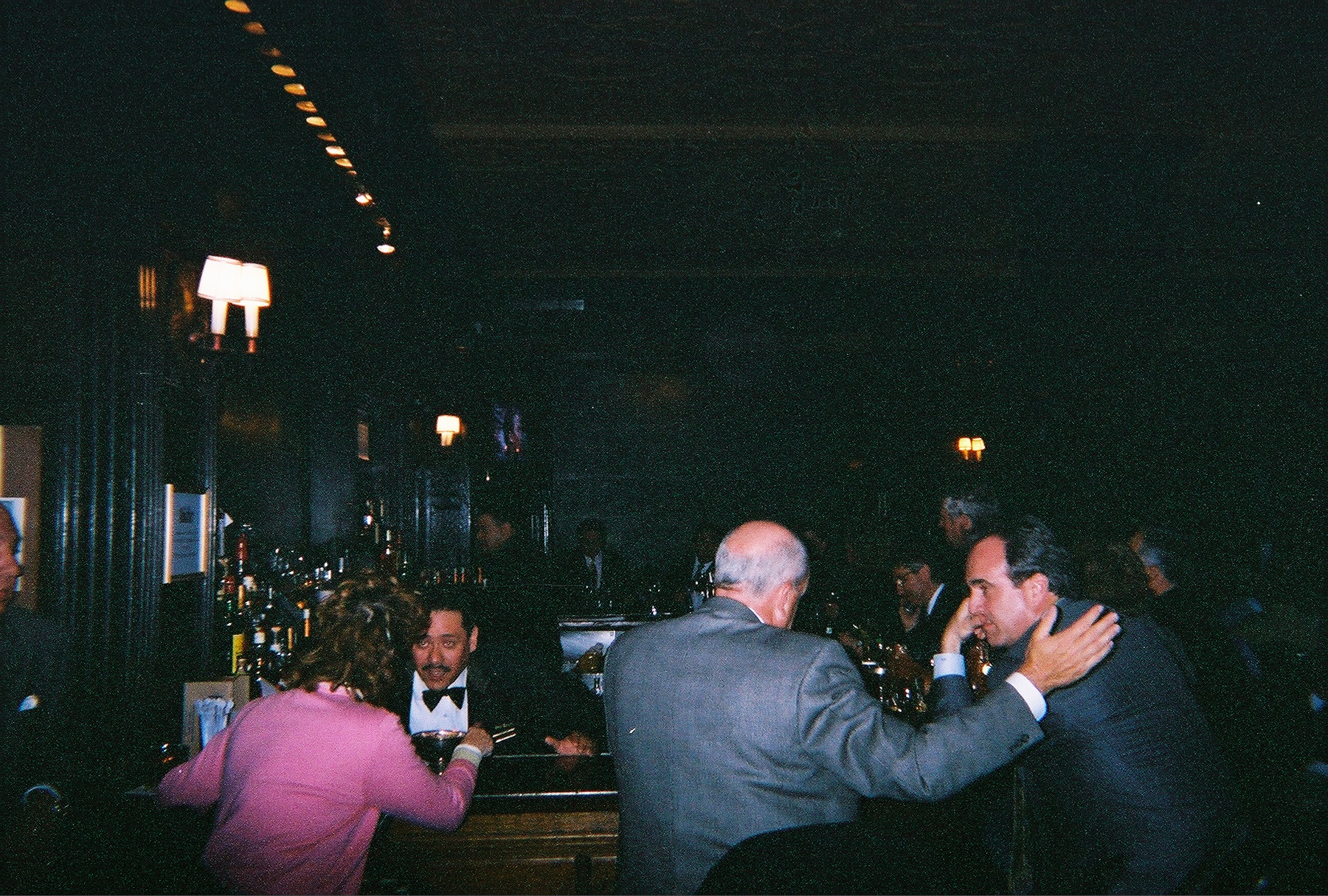
The Plaza's Oak Room is one of those famous Hotel Bar's that are found in the movies in the 1940's. It is still a place to see and be seen in. Settling in, Mike and Bone started hitting the 18 year-old Glenmorangie enjoying the view of the Horse carriages riding through Central Park. The boys chatted about life, business, their (many) wife's as the early evening progressed. By 8:00 PM it was dark and they had rang up a $350 dollar Bar Bill !! The Oak Room is cool, but it's not cheap !! From the Oak Room the Boys walked down from Central Park to 45th Street, where they caught a Cab back down town. Despite the late lunch they where ready for another New York tradition, grabbing a signature steak at Delmonico's
Grabbing a Steak at Delmonico's
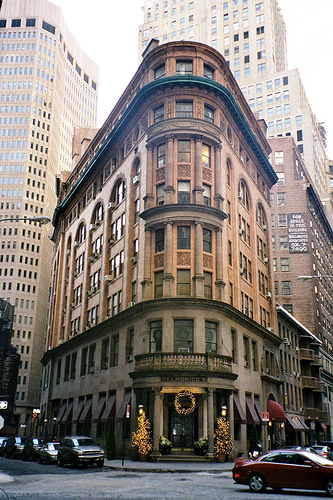
Delmonico's another restaurant from 1800's and is the place that the Delmonico cut of steak originated. Expect either a stuffy place or rundown with a faded glory, Demonico's was surprisingly clean, modern, with great service as good as or better than any Morton's or Palm Steakhouse. For a $140 bucks, the Boys got a couple of Scotches, two Delmonico steaks, and a fine bottle of Cabernet, which is extremely reasonable.
Trip, Postscript
The Boys left Delmonico's around 11:00 PM. with Mike having and early flight from Newark to Detroit and Bone flying back to Richmond they decided to call it an eventful day and trip, with lots of New York traditions viewed, eaten, walked and definitely drank, thus ending the Irish I was in New York Tour !!!!